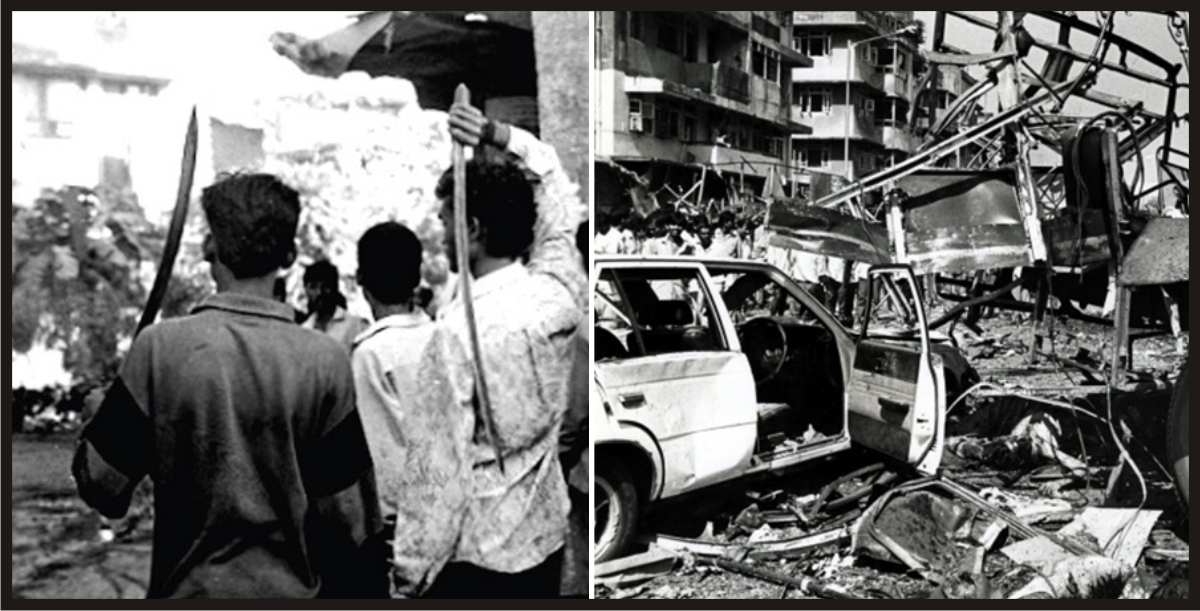With the announcement of quantum of punishment to the perpetrators of March 1993 serial blasts in Bombay by Judge GA Sanap of the special Terrorism and Disruptive Activities (Prevention) Act [TADA] court on September 7, 2017, probably, the longest terror case trial in India comes to a close. In the first phase of this trial Judge PD Kode of Special TADA Court had sentenced 12 convicts to death and 20 to life term on September 12, 2006. With the latest judgment 100 of the 123 accused have been punished.

Well Done! The Muslim terrorists who killed 257 and maimed hundreds of innocent residents of Bombay in March 1993 have been punished. Many of them have been sent to the gallows, others awarded life sentences and so on.
But what about those terrorists who butchered 575 (at least) and maimed hundreds of people of the minority in December 1992-January 1993 in the same city. In fact, some of the instigators later occupied high constitutional offices in democratic-secular India. This is true of the Sikh minority too: While those dubbed “Khalistani terrorists” were hanged or killed on the roads, those perpetrators of the 1984 massacre of Sikhs, the Indian State is yet to conclude its process of finding the real culprits –and give justice.
Sadly, with regards to both Communal and Caste violence, India has two kinds of laws, one for minority/Dalits and other for majority/high Castes.
Whenever the former suffer, or are the Victims, the Indian State plays a game of forming Commission upon Commission, to ensure that the heinous crimes against minorities and Dalits disappear from the public memory. In this context, the 1992-93 Bombay violence becomes an interesting case study. If violence is however, believed to have been perpetrated by the minorities/Dalits, the punishment is instant.
This latest judgment ensures punishment for March 1993 perpetrators but despite Justice BN Srikrishna Commission Report holding several Hindutva-driven organisations responsible for the targeted killings of the Muslim minority in December 1992-January 1993, and also indicting senior and other police officials for crimes of omission and commission, no criminal prosecutions resulted, leave alone convictions.
One unfortunate aspect of our post-Independence governance has been that whenever the country witnesses the large-scale violence against minorities and Dalits, the search for perpetrators continues endlessly and criminals rarely punished. Major incidents of violence against minorities like Nellie massacre (1983), Sikh massacre (1984), Hashimpura custodial massacre of Muslim youth (1987), pre/post-Ayodhya mosque demolition violence against Muslims (1990-92), and Kandhmal cleansing of Christians (2008) are testimony to this reality. The Gujarat genocidal carnage (2002) is one exception where thanks to the efforts of some rights organizations as many as 172 perpetrators, to date, have been punished.
In the case of brute anti-Dalit violence, the narrative is no different. The major incidents of persecution and massacre of Dalits; 1968 Kilvenmani massacre, 1997 Melavalavu massacre, 2013 Marakkanam anti-Dalit violence, 2012 Dharmapuri anti-Dalit violence (all in Tamil Nadu), 1985 Karamchedu massacre, 1991 Tsundur massacre (all in AP), 1996 Bathani Tola Massacre, 1997 Laxmanpur Bathe massacre (all in Bihar), 1997 Ramabai killings, Mumbai, 2006 Khairlanji massacre, 2014 Javkheda Hatyakand, (all in Maharashtra), 2000 Caste persecution in (Karnataka), 5 Dalits beaten/burnt to death for skinning a dead cow 2006, 2011 killings of Dalits in Mirchpur (all in Haryana), 2015 anti-Dalit violence in Dangawas (Rajasthan) are some of the thousands of incidents of the Dalit persecution most of the perpetrators remain unidentified. Moreover, in almost all the anti-Dalit violence cases, the culprits have been acquitted or released on bail despite murder charges against them.
These symptoms of majoritarianism in our institutions of governance –police (law enforcement), executive and even the judiciary need to be faced, head on. As a nation wedded to exalted ideals of democracy, secularism and egalitarianism we must never shy away from critically interrogating this dichotomy, and correcting it, head on. Or else our democracy will fall victim to the forces of religious bigotry and casteist hegemony.
Hashimpura massacre where 42 Muslim youth in police custody were shot dead on the banks of a river by a PAC team all the culprits who were on bail were finally acquitted by the court in 2015.